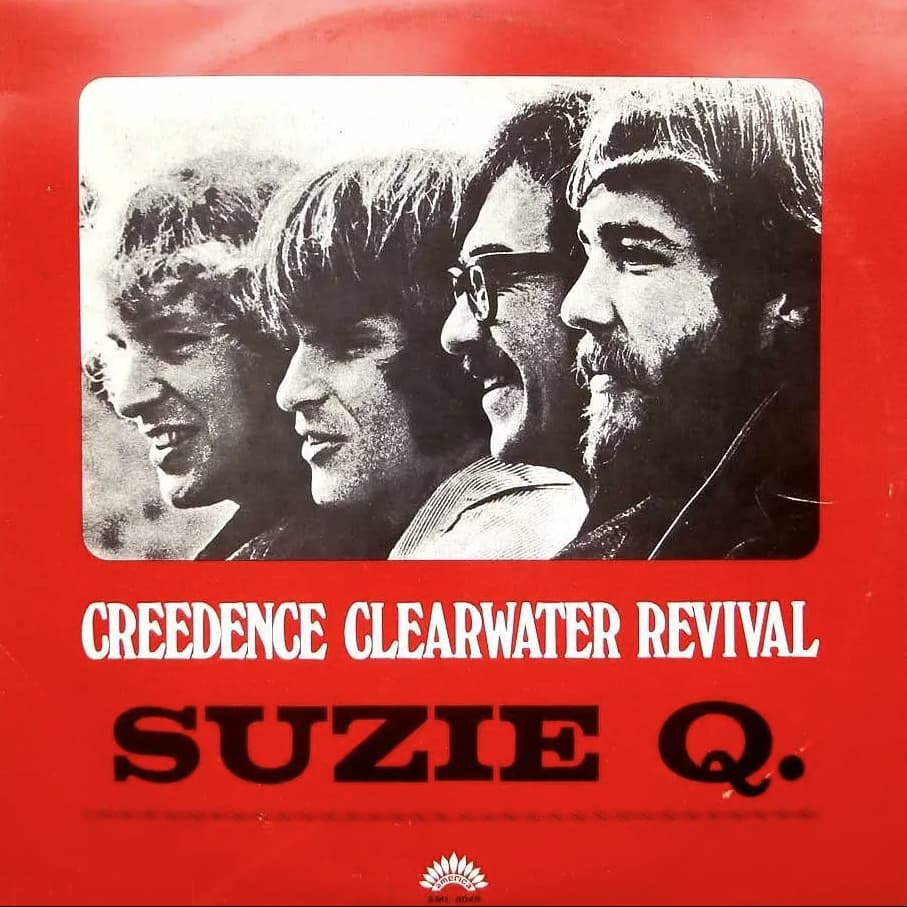
Creedence Clearwater Revival’s “Susie Q”: A Timeless Rockabilly Classic Reimagined
When Creedence Clearwater Revival released their rendition of “Susie Q” in 1968, they did more than just cover a rockabilly classic—they transformed it into a cornerstone of American rock music. Originally penned by Dale Hawkins and released in 1957, “Susie Q” had already made its mark as a standout track in the rock and roll scene. However, it was CCR‘s version that truly brought the song into the limelight, introducing it to a new generation and cementing its place in rock history.
“Susie Q” became the first big hit for Creedence Clearwater Revival, peaking at number 11 on the Billboard Hot 100 in November 1968. This achievement was particularly noteworthy as it was the band’s only Top 40 hit not written by their frontman, John Fogerty. Instead, they took Hawkins’ rockabilly original and infused it with their own swamp rock style, characterized by gritty guitar riffs, a driving rhythm, and a raw, unpolished sound that resonated deeply with listeners of the time.
One of the most fascinating aspects of CCR‘s version is its length and structure. While the original clocked in at a standard two-and-a-half minutes, CCR stretched their rendition to an epic 8 minutes and 37 seconds on their debut album. The decision to extend the song was a deliberate one, as Fogerty later revealed to Rolling Stone magazine in 1993. He wanted to create a track that would appeal to the progressive-rock radio station KMPX in San Francisco, known for its love of extended jams and experimental sounds.
The album version of “Susie Q” is divided into two parts on the single release. Part one, found on the A-side, captures the essence of the song with its infectious riff and Fogerty‘s bluesy vocals, fading out just before the coda. Part two, on the B-side, picks up where the A-side left off, bringing listeners into an extended jam session that showcases the band’s musical prowess. This structure allowed CCR to maintain the song’s radio-friendly appeal while also indulging in the kind of extended improvisation that defined the era’s live performances.
Adding to the song’s legacy, Fogerty incorporated the main riff from “Smokestack Lightning” after the second verse, a nod to another blues classic that further rooted “Susie Q” in the rich tradition of American music. This blend of rockabilly, blues, and the emerging swamp rock sound was instrumental in defining CCR‘s identity and setting them apart from their contemporaries.
The enduring popularity of “Susie Q” is evident in its certification milestones. The song was first certified Gold by the RIAA on December 13, 1990, recognizing half a million copies shipped. Nearly three decades later, on May 10, 2019, it achieved Platinum status, marking a million copies in sales and streams. These accolades reflect the song’s lasting impact and its continued relevance in the decades since its release.
In many ways, Creedence Clearwater Revival’s “Susie Q” serves as a bridge between the past and the future of rock music. By honoring the roots of rockabilly while infusing it with their distinctive sound, CCR created a track that remains as fresh and compelling today as it was in 1968. For fans of the band and newcomers alike, “Susie Q” is a testament to the power of musical innovation and the timeless appeal of rock and roll.